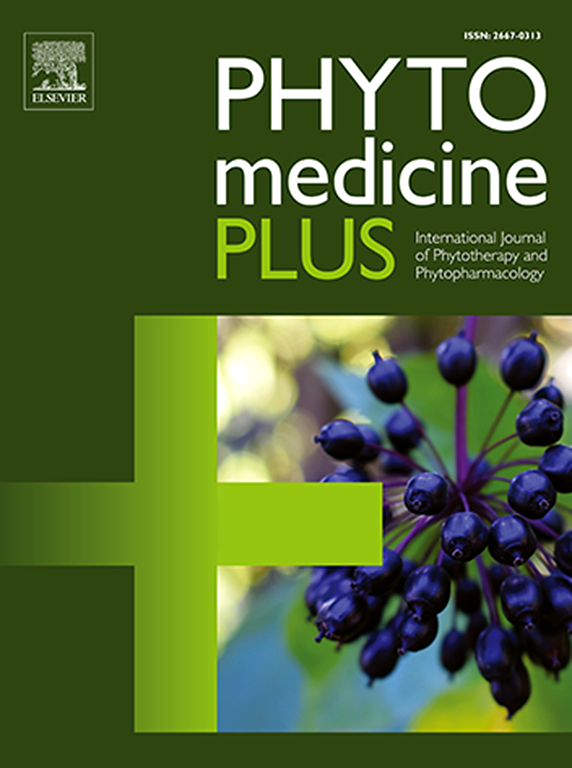土著社区指导的化学基因组学见解雷帕霉素与神经醇的协同作用,从kānuka (Kunzea robusta)的叶子提取物中提取,Tairāwhiti, Aotearoa新西兰
Q3 Pharmacology, Toxicology and Pharmaceutics
引用次数: 0
摘要
最大化疗效和最小化毒性是药物发现的关键。利用天然产物组合方法可以提供一种有希望的策略,以保持生物活性,同时减少患者治疗中潜在毒性药物的剂量。Kānuka (Kunzea robusta)是新西兰Aotearoa的一种著名的特有植物,具有传统知识和初步实验室研究表明的抗菌生物活性的治疗价值,但该植物的组合生物活性研究尚不存在。通过一项由土著Māori社会企业领导的研究合作,确保土著土地所有者在研究的每个阶段免费、事先和知情同意的情况下提供生物材料和知识,我们证明了kānuka叶子的蒸汽提取物与众所周知的免疫抑制剂雷帕霉素具有协同活性,从而增强了模式生物酿酒酵母的生物活性。全基因组基因缺失筛选的网络分析表明,该提取物提高了雷帕霉素的生物利用度。随后的荧光显微镜分析揭示了内吞和氧化应激途径的重要性。生物测定指导下的代谢组学分析阐明了蒸汽提取物的主要成分α-蒎烯不是协同生物活性的原因,相反,突出了橙花醇是一个强大的协同候选物。鉴于雷帕霉素在许多涉及抗癌、抗衰老和抗微生物活性的临床研究中是一种先进的化合物,尽管与几种毒副作用有关,本研究为kānuka叶子的这种以前未知的生物活性提供了机制见解,并说明了低浓度、更安全的雷帕霉素如何可能在这些不同的临床环境中使用。本文章由计算机程序翻译,如有差异,请以英文原文为准。

Indigenous community-guided chemical genomic insight into synergy of rapamycin with nerolidol derived from a leaf extract of kānuka (Kunzea robusta) in Tairāwhiti, Aotearoa New Zealand
Maximizing efficacy and minimizing toxicity are essential in drug discovery. Utilizing a natural product combinatorial approach can offer a promising strategy to preserve bioactivity while reducing the dosage of potentially toxic drugs in patient treatment. Kānuka (Kunzea robusta) is a well-known endemic plant of Aotearoa New Zealand that has therapeutic value with traditional knowledge and preliminary laboratory studies indicating antimicrobial bioactivities, yet combinatorial bioactivity studies of this plant are non-existent. Via a research collaboration led by an indigenous Māori social enterprise that ensured indigenous landowners contributed biological material and knowledge with free, prior and informed consent at each stage of the study, we show that a steam extract of kānuka leaves has synergistic activity with the well-known immunosuppressive agent, rapamycin, resulting in amplified bioactivity in the model organism Saccharomyces cerevisiae. Network analysis of a genome-wide gene deletion screen suggested the extract increased the bioavailability of rapamycin. Subsequent fluorescent microscopy analyses revealed the importance of endocytic and oxidative stress pathways. Bioassay-guided metabolomic analyses elucidated the main component of the steam extract, α-pinene, to not be responsible for the synergistic bioactivity, rather, highlighting nerolidol as a strong synergistic candidate. Given rapamycin is an advanced compound in many clinical studies involving anti-cancer, anti-ageing, and anti-microbial activities, albeit associated with several toxic side-effects, this study provides mechanistic insight into this previously unknown bioactivity of kānuka leaves and illustrates how a lower, and safer, concentration of rapamycin could be potentially used in these diverse clinical settings.
求助全文
通过发布文献求助,成功后即可免费获取论文全文。
去求助
来源期刊

Phytomedicine Plus
Medicine-Complementary and Alternative Medicine
CiteScore
3.70
自引率
0.00%
发文量
178
审稿时长
81 days
期刊介绍:
 求助内容:
求助内容: 应助结果提醒方式:
应助结果提醒方式:


